
Ficus lyrata, commonly known as the fiddle-leaf fig or fiddle fig, is a species of flowering plant in the fig family Moraceae.
This beautiful plant can really change the feng shui of any room – its broad, succulent leaves and tall stature make it a great addition to your house plant menagerie.
As a pet owner, it is important to research the consequences of your pet consuming any live vegetation you keep around.
Fiddle Leaf Figs contain a sap-like substance called ‘sapogenin’ making them poisonous to cats, dogs and babies. This gooey liquid is found in the leaves and stems of the plant is mildly toxic and can cause oral discomfort and indigestion to anyone or anything that chews it.
That being said, your pets are unlikely to seek this plant out as it can be quite unassuming and can blend right in. Let us take a look in more detail.
Are Fiddle-Leaf Figs Toxic to Cats?
While the FLF is mildly toxic to cats, it is not necessarily the whole plant that is to blame. Apparently when your cat chews on the stems and leaves, they release a white, creamy, sap-like substance that contains jagged crystals.
These calcium oxalate pieces can cause gut irritation in your feline friend. The sharp edges can also cause oral irritation.
Although there is no scientific evidence to suggest that fiddle-leaf figs are excessively poisonous to cats, It’s always best to be overly cautious and keep your tiny plant child out of reach of your feline buddy.
If ingested, the plant could cause gastrointestinal upset, including vomiting and diarrhea or excessive drooling and lethargy. If you suspect that your cat has eaten a fiddle-leaf fig, contact your veterinarian immediately!
Symptoms of Fiddle-Leaf Fig Ingestion in Cats
What Should You Do if Your Cat Eats a Fiddle-Leaf Fig?
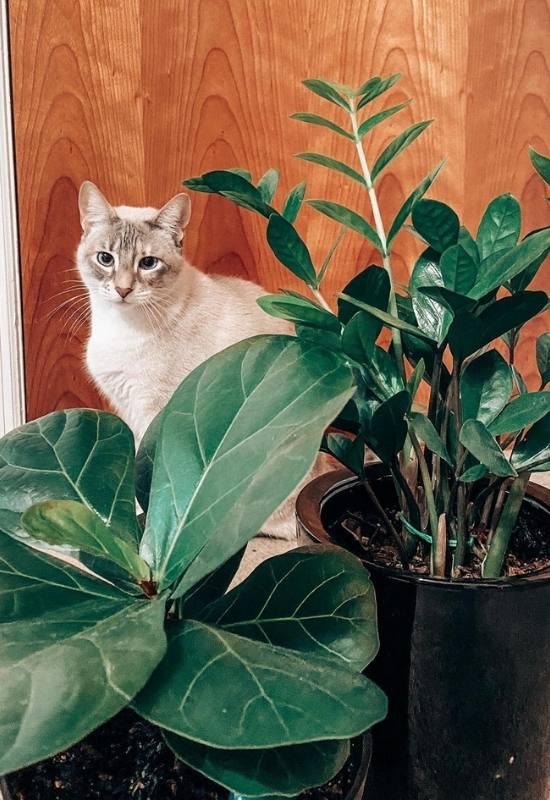
If you think your cat has eaten a fiddle-leaf fig, the first thing you should do is contact your veterinarian.
They will likely recommend that you bring your cat in for an examination. In some cases, they may also recommend giving your cat activated charcoal to help absorb any toxins in the gut.
If your cat is showing signs of illness, such as vomiting or diarrhea, contact your veterinarian immediately. These could be signs of gastrointestinal upset and may require treatment.
In most cases, cats who have eaten a fiddle-leaf fig will recover without any problems. However, it’s always best to err on the side of caution and seek professional medical help if you think your cat has ingested the plant.
Are Fiddle Leaf Figs Toxic For Dogs?
All parts of the fiddle-leaf fig plant contain toxins that can cause illness in dogs if ingested. The most toxic part of the plant is the leaf, which contains a substance called sapogenin. This toxin can cause gastrointestinal upset, including vomiting and diarrhea, if ingested by a dog.
Sapogenin is also present in the plant’s stems and roots, but in lower concentrations. These parts of the plant are less likely to cause illness if ingested, but they can still cause gastrointestinal upset.
Symptoms of Fiddle-leaf Fig Poisoning in Dogs
If you think your dog has eaten a fiddle-leaf fig, contact your veterinarian immediately. They will likely recommend bringing your dog in for an examination and may also recommend giving them activated charcoal to help absorb any toxins in the gut.
In general, Fiddle-leaf fig poisoning in dogs is not considered to be dangerous. However, it’s always a good idea to get expert medical assistance if you believe your dog ate a fiddle-leaf fig.
Is Fiddle Leaf Fig Toxic for Humans?
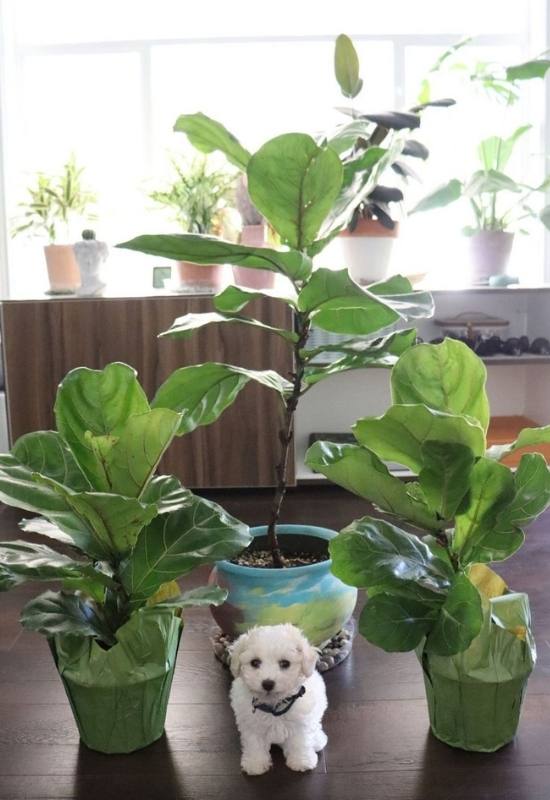
Fiddle-leaf figs are not fatally toxic for babies, but they can cause gastrointestinal upset if ingested. Depending on how old the baby is, and whether they have teeth – they may not get the oral sores. The jagged crystals in the sapogenin are only exposed when the plant is chewed.
If you think your baby has eaten a fiddle-leaf fig, contact your doctor or Poison Control immediately for advice.
In general, Fiddle-leaf fig poisoning in babies is not considered to be dangerous. However, it’s always a good idea to get expert medical assistance if you believe your baby ate a fiddle-leaf fig.
Are Cats Attracted to Fiddle-leaf Figs?

There is no scientific evidence to suggest that cats are attracted to fiddle-leaf figs. However, some people believe that the plants’ broad leaves and soft texture make them appealing to cats.
If you have a cat and a fiddle-leaf fig, it’s best to keep the two separate to avoid damage to the plant and kitty.
Are Dogs Attracted to Fiddle-leaf Figs?
It’s a question that many dog owners ask: are dogs attracted to fiddle-leaf figs? The answer, unfortunately, is that there is no clear consensus.
Some dog owners report that their dogs seem interested in the plant, while others say that their dogs avoid it altogether.
So what explains this discrepancy? It’s possible that some dogs are simply more interested in new and unusual things than others. It’s also possible that the smell or taste of the fiddle-leaf fig is not particularly appealing to dogs.
Or, it could be that the plant’s leaves resemble those of a poisonous plant (such as poison ivy), and dogs are instinctively avoiding them.
What Are Some Pet Safe Alternatives to Fiddle-Leaf Figs?
If you’re looking for safe indoor plant alternatives to fiddle-leaf figs, there are several house plants that are similar in feel but are non-toxic to dogs, cats and babies. Some of these plants include:
Boston fern

Boston fern (Nephrolepis exaltata) is an evergreen fern that is native to tropical regions. It is a popular houseplant and is known for its ability to filter out formaldehyde from the air.
The Boston fern can grow to be up to three feet tall and produces long, cascading fronds. It prefers humid environments and should be kept moist, but not wet, at all times.
If the leaves of the plant begin to turn brown, it is an indication that it is not getting enough moisture. Brown leaves should be trimmed off as soon as possible. The Boston fern is relatively low-maintenance and makes a beautiful addition to any home or office.
Spider plant
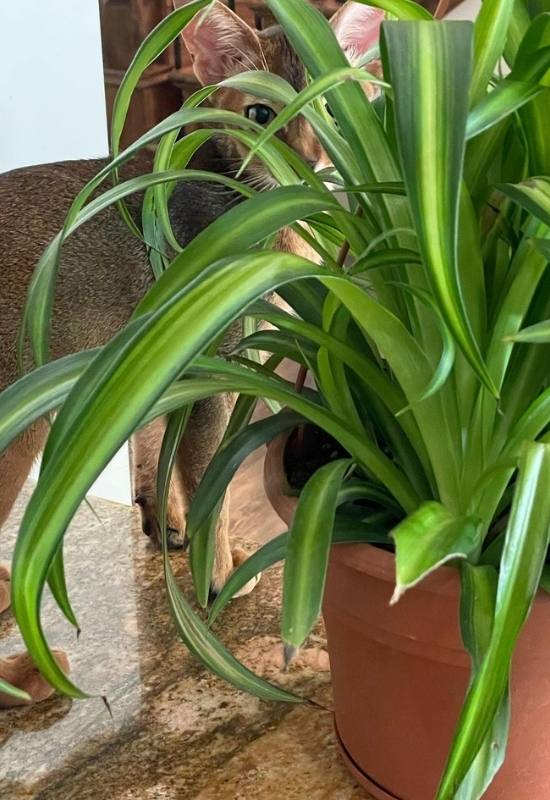
The Spider plant (Chlorophytum comosum) are popular beautiful house plants that is easy to grow. It gets its name from the long, spider-like leaves that trail down from the plant.
The leaves are variegated with green and white stripes, and the plant produces small white flowers. Spider plants are known for being easy to care for, and they make a great addition to any home. If you’re looking for a plant that is low maintenance and easy to care for, the Spider plant is a great choice.
Peace Lily
The Peace Lily is a beautiful flower that has many meanings and symbolism behind it. In the Victorian era, the Peace Lily was given as a symbol of peace and serenity.
The meaning of the Peace Lily has also been said to be purity, innocence, and hope. This lovely flower is native to tropical regions of Asia and is a member of the Araceae family. The scientific name for the Peace Lily is Spathiphyllum Wallisii.
The Peace Lily gets its name from the white spathe that blooms from the center of the plant. The spathe resembles a calla lily and is what makes this plant so unique.
The Peace Lily can grow to be about 24 inches tall and prefers shady areas to grow in. The Peace Lily is a beautiful flower that is perfect for adding a touch of elegance to any room.
When choosing a house plant, it’s always important to do your research to make sure it is non-toxic to pets and children. If you have any concerns, it’s best to consult with a professional before bringing a new plant into your home.
Tips and Tricks for Keeping Your Pets Away From Plants
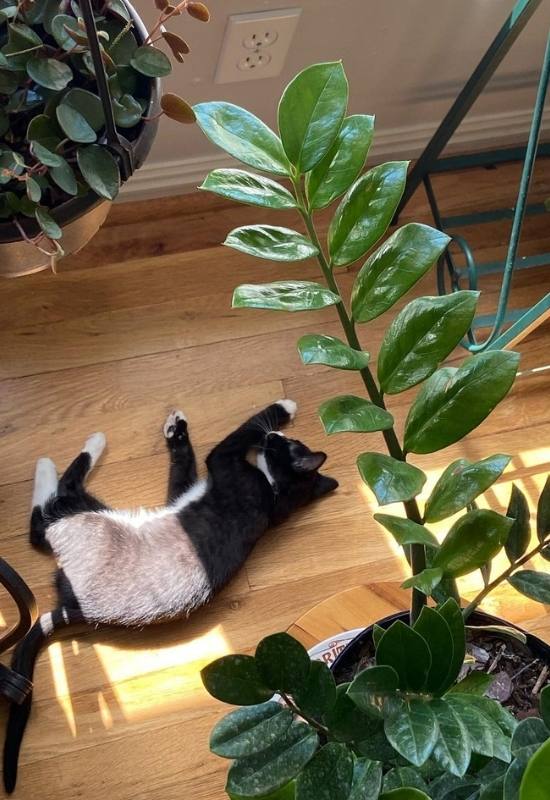
If you’re looking for ways to keep your pets away from plants, there are a few things you can do.
First, make sure to choose plants that are non-toxic to pets. This is the most important step in keeping your pets safe. There are many beautiful plants that are safe for pets, so there’s no need to worry about choosing something that could be harmful.
Second, keep your plants out of reach of your pets. If you have a cat, this may mean keeping your plants on high shelves or in another room altogether. For dogs, you may need to create a physical barrier around your plants with a fence or gate.
Third, train your pet not to go near your plants. This will take some patience and consistency, but it can be done. Start by teaching your pet the “leave it” command.
Once your pet is consistently obeying this command, you can begin to introduce them to your plants while saying “leave it.” With time and patience, your pet will learn to stay away from your plants.
Conclusion
Fiddle-Leaf figs (Ficus lyrata) are a type of fig tree that is native to tropical regions. They are popular houseplants because of their ability to filter out formaldehyde from the air.
Although they are non-toxic to humans, fiddle-leaf figs can be harmful to pets if ingested. Signs and symptoms of ingestion include vomiting, diarrhea, excessive drooling, oral discomfort and abdominal pain.
If your pet ingests a fiddle-leaf fig, it is important to seek veterinary care immediately. Following these tips will help you keep your pets safe and ensure that your plants stay healthy and beautiful.

Written By
Emily O Bethke
Born in northern Wisconsin, Emily has always had a passion for plants. This passion has led her to work in greenhouses, landscaping, and academic plant research at multiple university’s. She graduated from the University of Wisconsin Milwaukee with a BS in conservation and environmental science. When she isn’t caring for her plants or writing you can find her traveling, cooking, at live music shows, and spending time in nature.

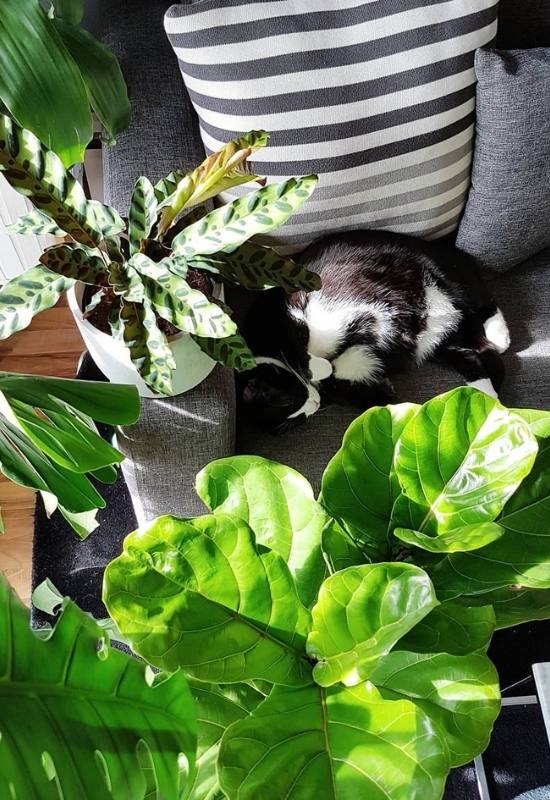
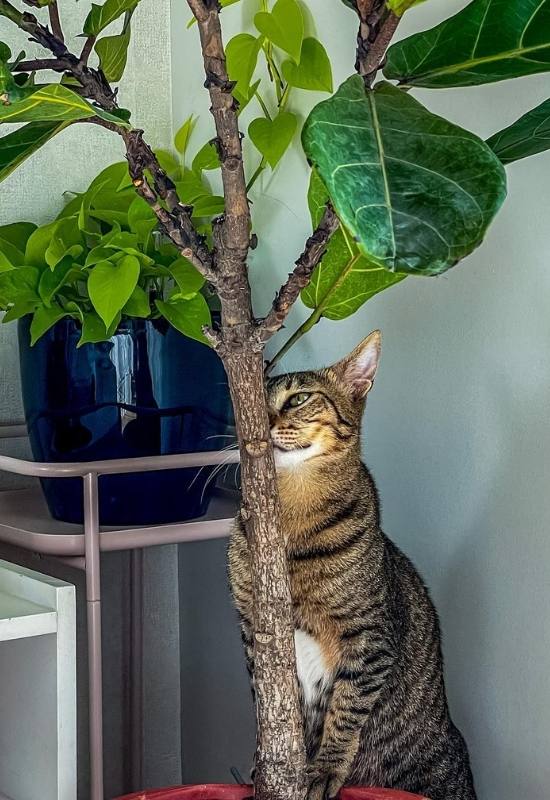

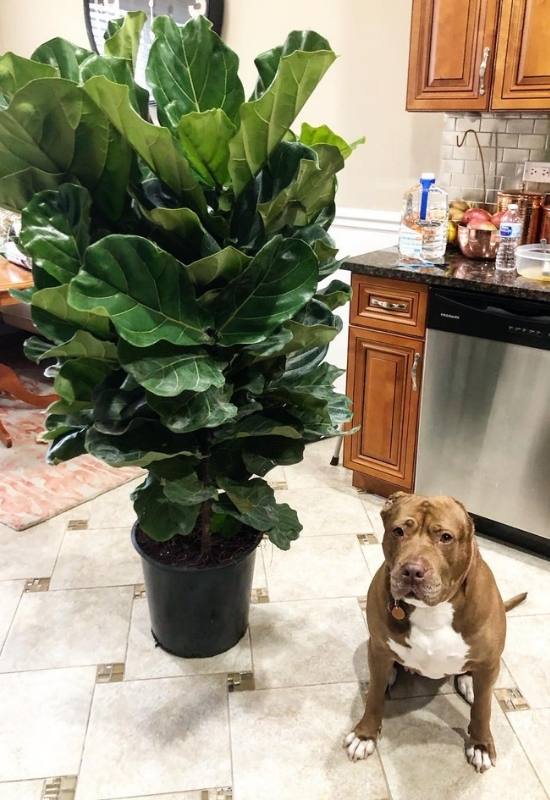


Just a suggestion to double check but I’m pretty sure peace lilies or lilies in general are pretty toxic for animals and maybe humans